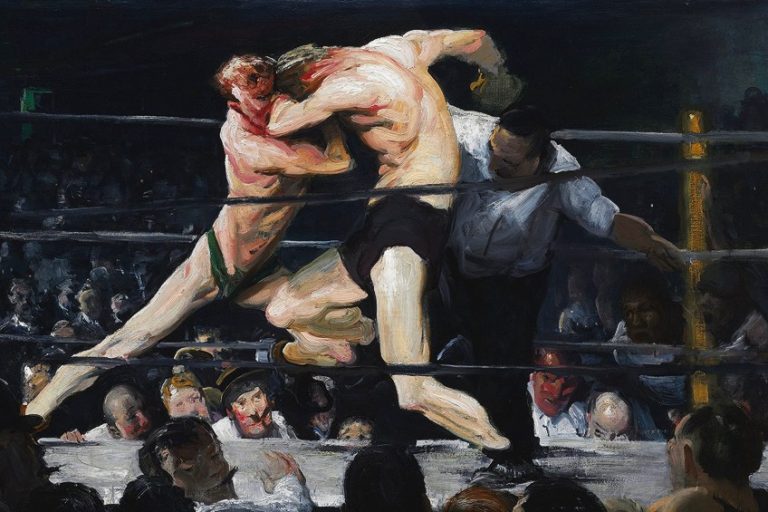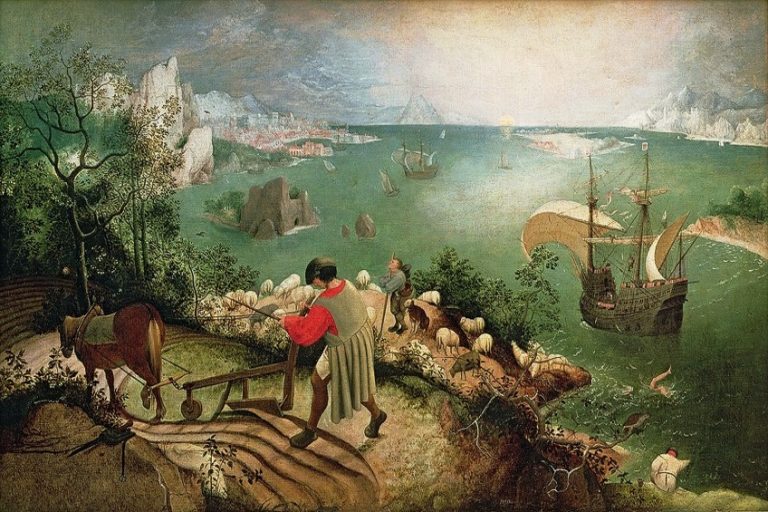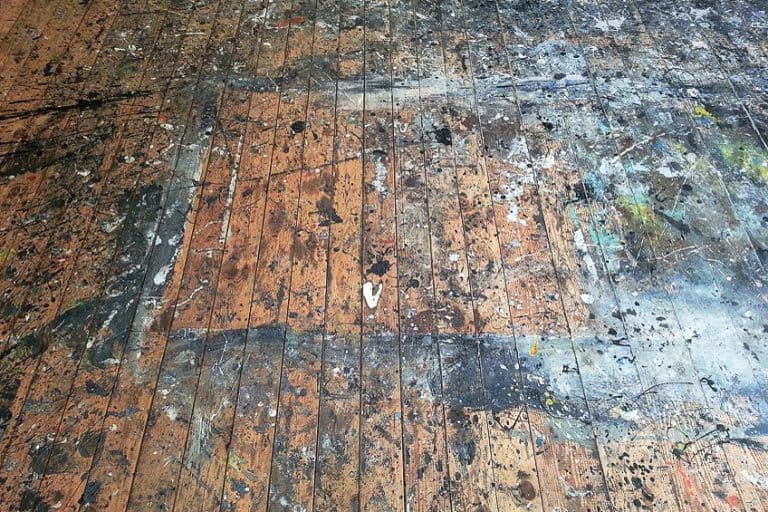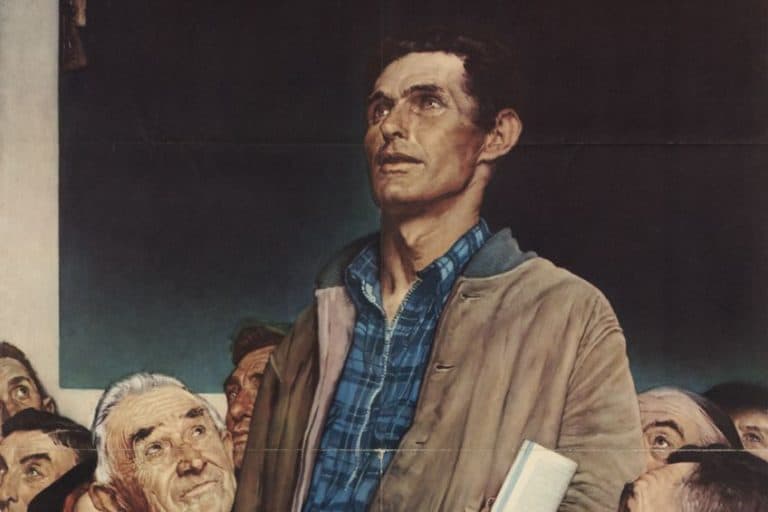The Banjo Lesson Painting Henry Ossawa Tanner – A Detailed Analysis
Henry Ossawa Tanner was known as one of the most famous African American artists of the 19th century and paid a tentative homage to the African American community and culture through one of his most applauded paintings, The Banjo Lesson (1893). We will discuss this painting in more detail in the article below.
Artist Abstract: Who Was Henry Ossawa Tanner?
Henry Ossawa Tanner was born on 21 June 1859, Pittsburgh in Pennsylvania. He was known as one of the first African American artists with international acclaim. He was given his middle name in honor of the anti-slavery town Osawatomie. Tanner studied at the Pennsylvania Academy of Fine Arts and was taught by the American realist Thomas Eakins.
In 1891 he started studies at the French Académie Julian, which influenced a large part of Tanner’s art.
He was also part of the American Art Club and traveled to the Middle East where his artwork would also be influenced by Orientalism. Tanner painted in the genres of Religion, Genre, and Landscape paintings. Tanner died on May 25, 1937, while he was sleeping.

The Banjo Lesson (1893) by Henry Ossawa Tanner in Context
Henry Ossawa Tanner was an American Realist painter who painted in several genres and themes that ranged from landscapes, people, and religion. His training was bridged between America and Paris, which ultimately shaped and created his artistic oeuvre.
This article will look at one of the many examples from the Henry Ossawa Tanner artwork collection, namely “The Banjo Lesson” painting.
We will provide a brief contextual analysis discussing why Tanner made this painting followed by a formal analysis discussing the stylistic aspects like color, light, and perspective, including taking a closer look at the subject matter.
| Artist | Henry Ossawa Tanner |
| Date Painted | 1893 |
| Medium | Oil on canvas |
| Genre | Genre painting |
| Period / Movement | American Realism, Symbolism |
| Dimensions | 124.5 x 90.2 centimeters |
| Series / Versions | Not applicable |
| Where Is It Housed? | Hampton University Museum, Virginia, United States |
| What It Is Worth | Not available |
Contextual Analysis: A Brief Socio-Historical Overview
Henry Ossawa Tanner came from a family with roots not only in religion but also in slavery. His mother, Sarah Elizabeth Miller, fled from her life as a slave and found freedom through the secret Underground Railroad routes. Tanner’s father was a bishop at the African Methodist Episcopal Church and undoubtedly laid a foundation for religion in Tanner’s upbringing.
As someone who developed a love for art from a young age, Tanner’s life was about producing art; he studied from some of the most notable teachers.
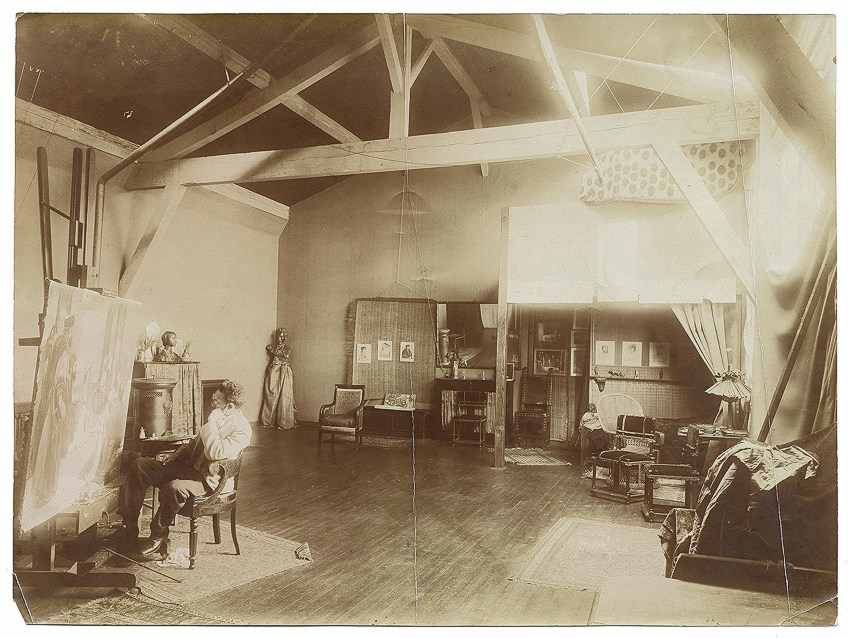
First at the Pennsylvania Academy of Fine Arts under Thomas Eakins, who was a well-known American Realist, painting portraits of various people and their activities. Eakins apparently influenced Tanner to a large extent.
When Tanner moved to Europe in 1891, he found his way to Paris and started studies at the Académie Julian. It is no surprise that during Tanner’s time in Europe, he was exposed to the budding and emerging art styles of the time, namely Impressionism and Symbolism. He would end up living abroad and occasionally traveled to the United States for different purposes.
The Story Behind The Banjo Lesson
Tanner traveled back to the United States due to Typhoid Fever. While he recuperated in North Carolina, in the Appalachian Mountains, he was exposed to the realities of how African Americans lived; there was severe poverty. While he stayed there, he drew the people that lived there.
It was during this trip when Tanner took a series of photographs and created several illustrations for the periodical “Harper’s Young People” in December 1893.
In it, a short story was published by Ruth McEnery Stuart titled Uncle Tim’s Compromise on Christmas (1893). One of the images portrayed the scene of a young boy and older man playing the Banjo; the young boy was also learning how to play it. This was the inspiration behind The Banjo Lesson painting.
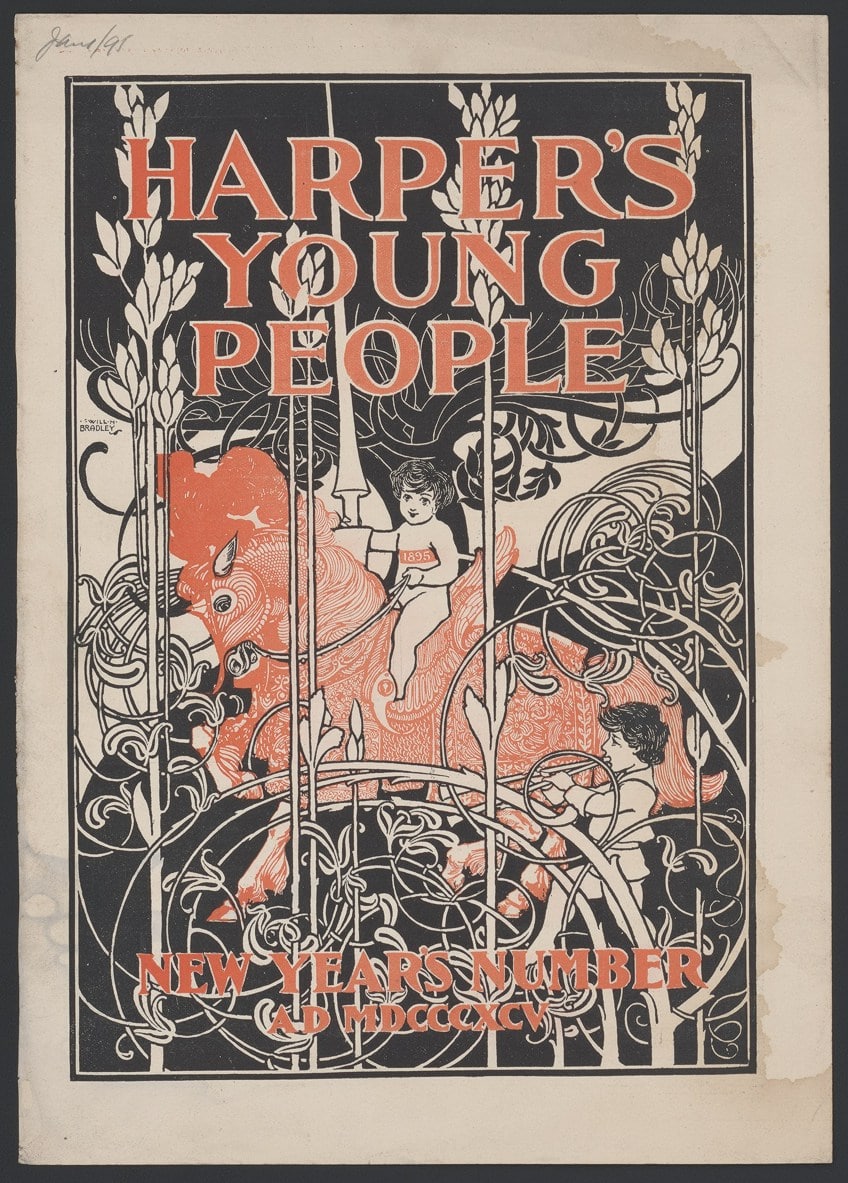
The short story was about an older man (Uncle Tim) and his Banjo was his only “personal possession”, which he gave to the younger boy for Christmas on the condition that it be shared between them. This was Uncle Tim’s compromise.
The story illustrates Tanner’s painting, describing that “It was the one thing the little boy counted on as a precious future property, and often, at all hours of the day or evening, old Tim could be seen sitting before the cabin, his arms around the boy…And sometimes, holding the banjo steady, he would invite little Tim to try his tiny hands at picking the strings”.
Tanner created an image that moved away from the stereotypical portrayals of African Americans that were so prevalent in 19th-century paintings, which showed them playing the Banjo as entertainment and entertainers, or as it has been described “minstrel” Banjo players.
What Tanner portrayed in The Banjo Player painting was giving African Americans back their pride and dignity. He depicted the subjects, the boy and man, as human beings and not these “other” figures only relegated to make others happy through entertainment, or more harshly, slavery.
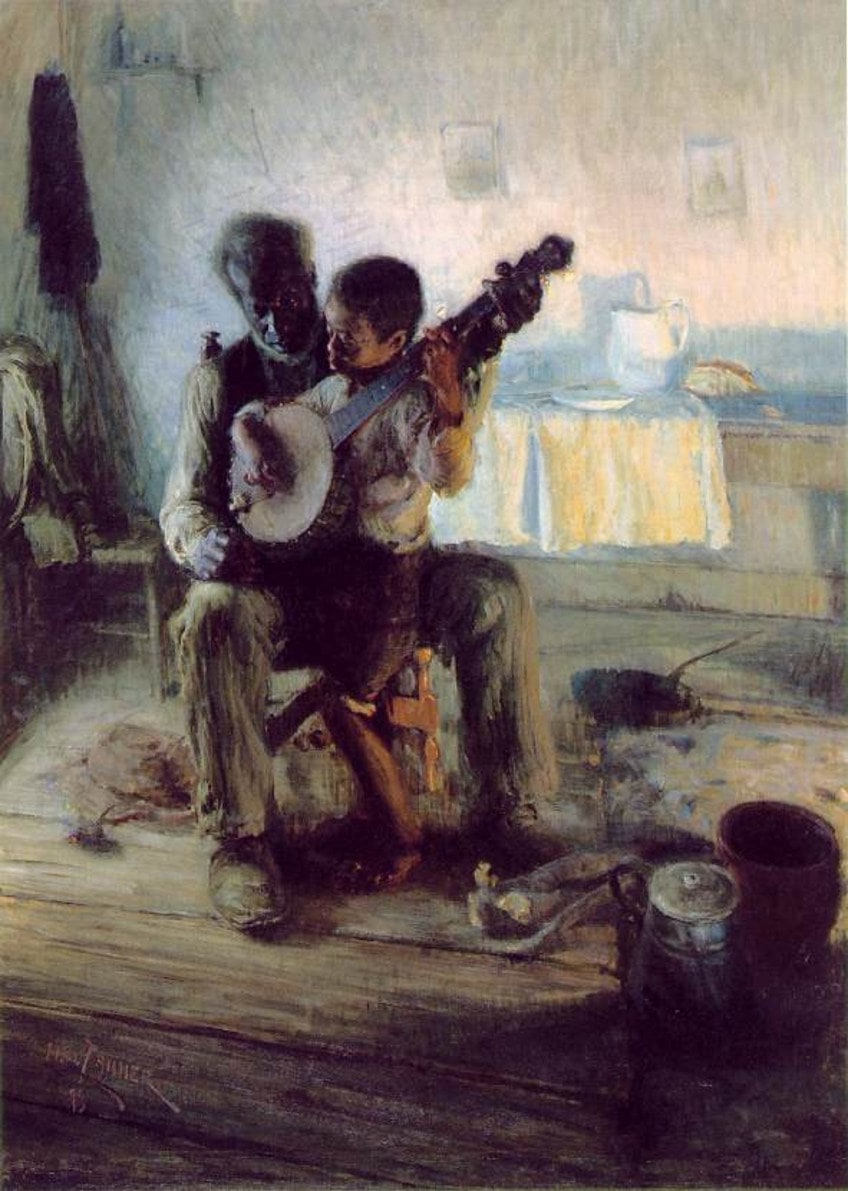
Formal Analysis: A Brief Compositional Overview
Below we discuss The Banjo Lesson painting in more detail and how this iconic Henry Ossawa Tanner artwork conveys a more nuanced portrayal of African Americans through the artistic styles of American Realism and traditional paintings.
Subject Matter
In The Banjo Lesson painting, Henry Ossawa Tanner depicts an interior space with two central figures who are African American. There is an older man with gray hair who sits on a wooden chair. His right hand rests on his right foreleg (our left) and his left hand (our right) is placed over the strings on the top part of a Banjo holding it up. In concentration, his head partially tilts to his right (our left).
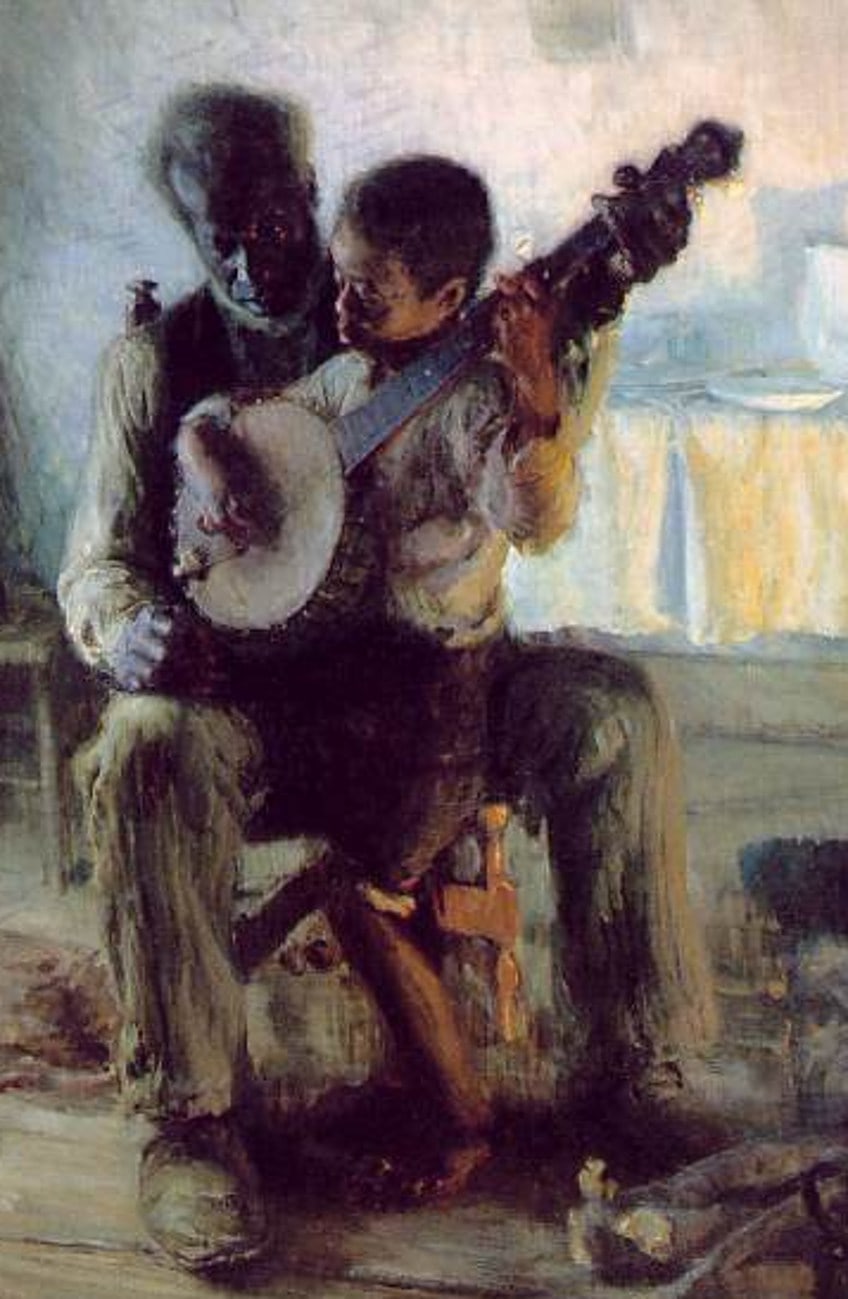
There is a young boy standing between the older man’s legs, which appear considerably larger than the boy, giving him enough space to lean on the inside of the man’s left leg (our right). The boy is busy playing the same Banjo; he is being taught by the older man.
Both appear in deep concentration as they play, learn, and teach this instrument together in quiet reflective demeanors.
We will notice surrounding the central figures is what appears to be a living area with only a few items that suggest kitchen and cooking wares. Towards the wall to the left of the composition is another chair with what appears to be jackets hung over it, above it is another jacket hanging on the wall.

On the wall behind the central figures, there is a small shelf in the top left corner with a few unnoticeable items on it, the only item that is more recognizable appears to be the white candle on the right. There are also two frames hanging on the wall.
Leaning against the same back wall is a long table with a white tablecloth draped over, on it is a large white pitcher, white plates, and other items suggesting this is a dining area.
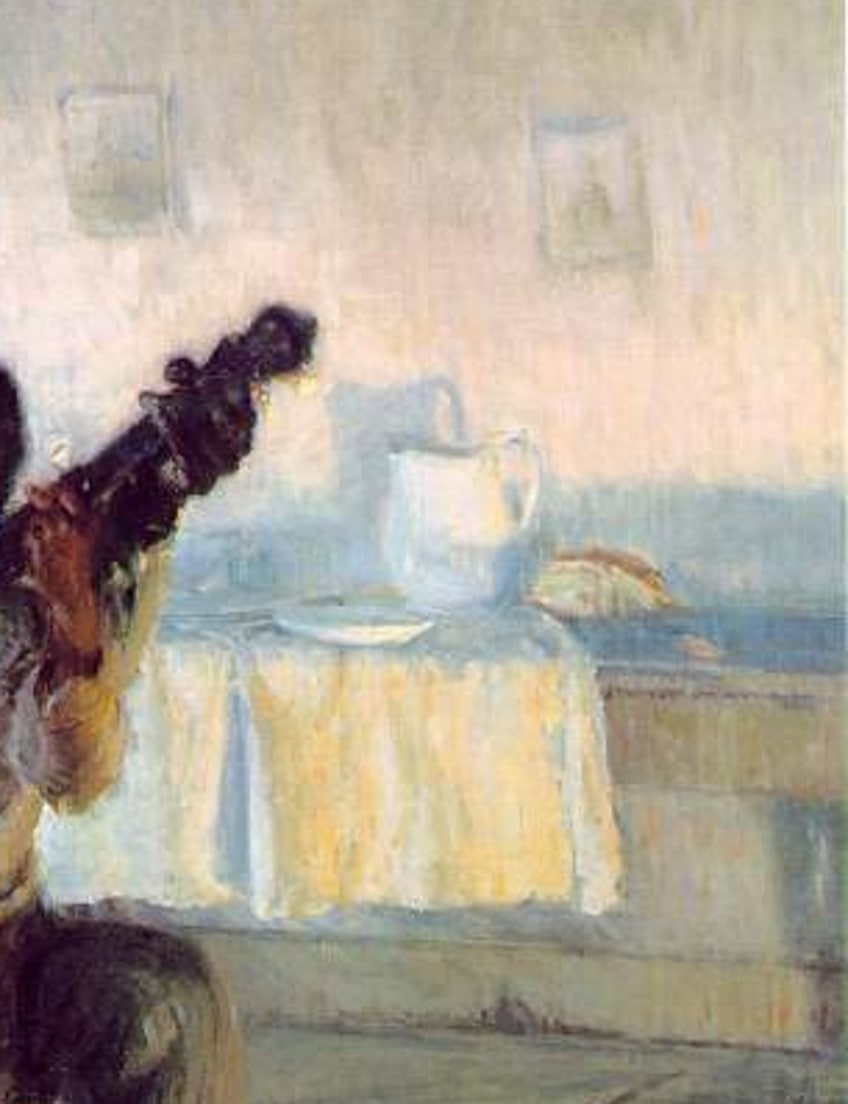
In the bottom right foreground of the composition, we see a large pan, a pot, and what seems to be a large stainless-steel jug with a lid, possibly for boiling water in. The floor is made of wooden floorboards and there are a few other unrecognizable objects strewn on the floor.

Color and Light
We will notice in The Banjo Lesson painting Henry Ossawa Tanner depicts two unknown light sources on both sides of the central figures. On the left side of the composition, this light source is possibly coming from a window, it is in a cooler blue tone. We see this especially lighting up part of the jacket hanging on the chair. On the right side, there is a larger area of warmer tones of color that suggest there is a fireplace to the right, where we cannot view it.
This fire light lights up most of the left of the composition, giving the white tablecloth a soft orange color.
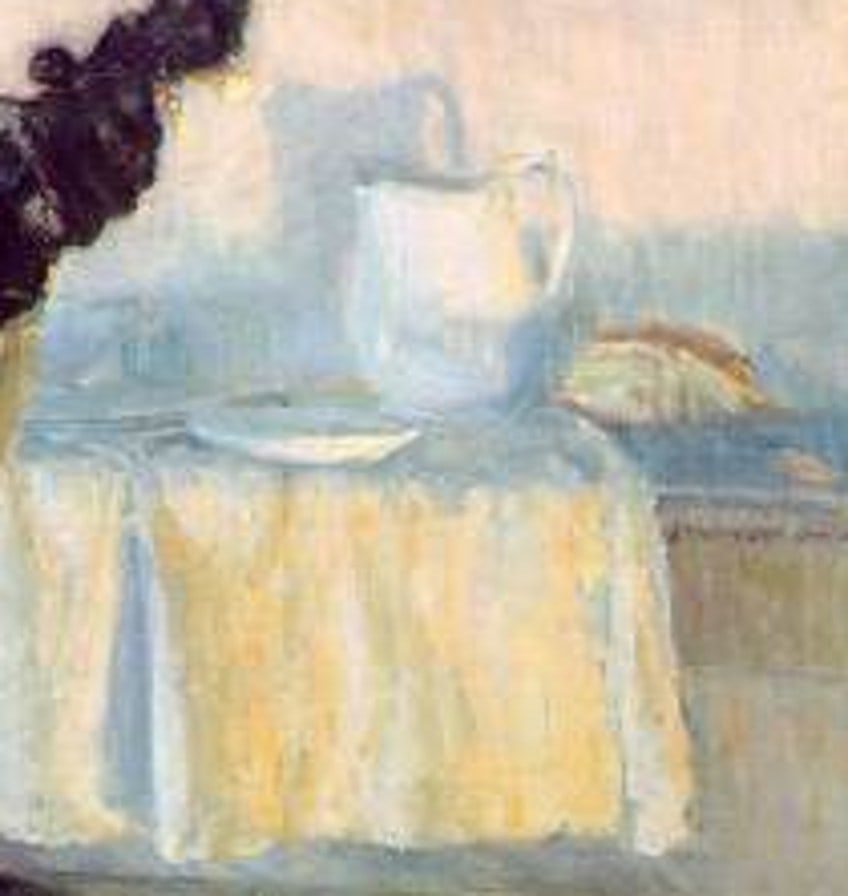
Tanner creates a delicate compositional divide with his use of these lighter (fireplace) and darker (window) areas. Some sources suggest the symbolism inherent in this play on “shadow and light”, which places the older man more into the cooler tones and the younger boy into the warmer tones.
This seemingly highlights the centrality of the young boy, who symbolizes the future, as the recipient of wisdom and knowledge from his elder, who symbolizes the past.
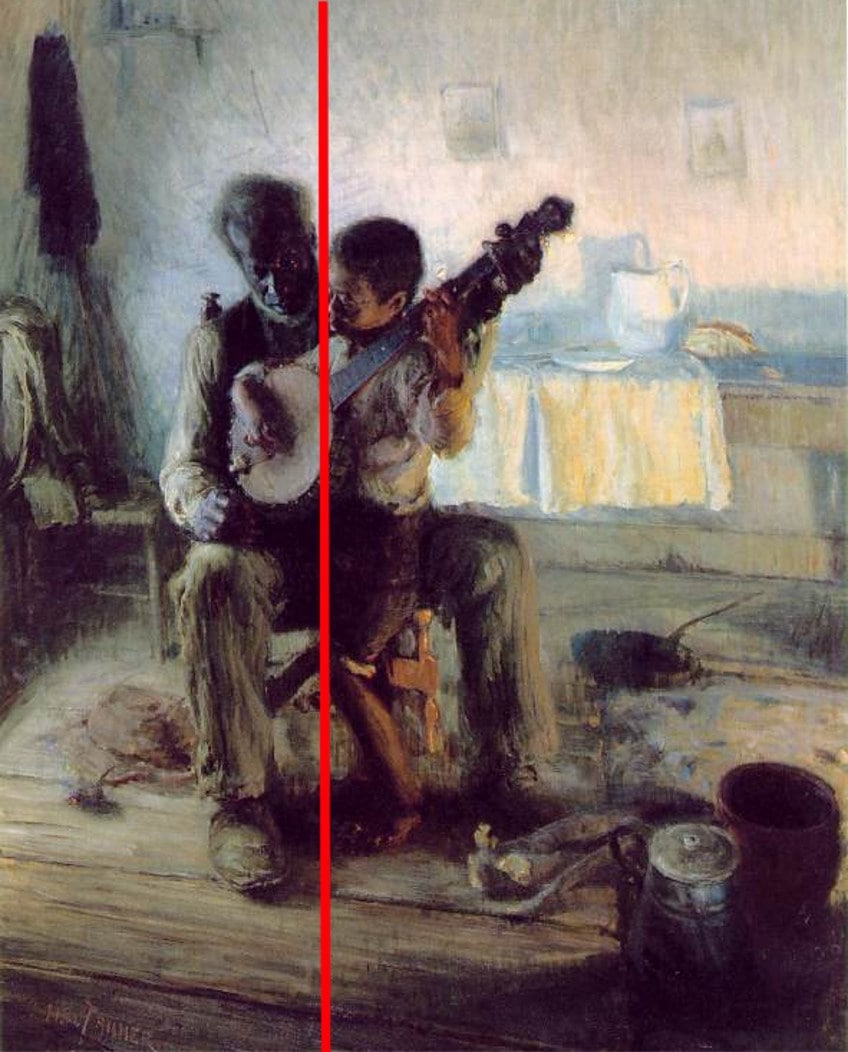
Furthermore, the colors that Tanner utilizes are neutral tones and easy for us, the viewers, to gaze at. There are also areas of dark shading, specifically around the figures. These all create a sense of calmness covering the composition, emphasizing the scene’s gentle nature; there are no harsh and bright colors that would otherwise create a liveliness that might seem out of context to the scene and its message. Tanner utilizes expressive and loose brushstrokes, which may hint at his influence from the Impressionist art style of the time.
However, we will find various stylistic influences evident in Tanner’s painting style that come from the Genre-styled paintings of Thomas Eakins, including the Italian Renaissance Domenico Ghirlandaio.

The Banjo Lesson has been compared to Ghirlandaio’s painting An Old Man and His Grandson (c. 1490), additionally other Flemish painters like Johannes Vermeer and his painting Woman with a Lute (c. 1662 – 1663). We will notice how Tanner’s scene resembles the quiet attentiveness from these above-mentioned paintings. There are additional paintings that Tanner’s The Banjo Lesson painting also draws influence from, specifically The Angelus (1857 to 1859) by Jean-François Millet, who was a Realism painter.
We will see that Millet also portrayed quiet, but affecting scenes of peasants and their lives dedicated to farming.
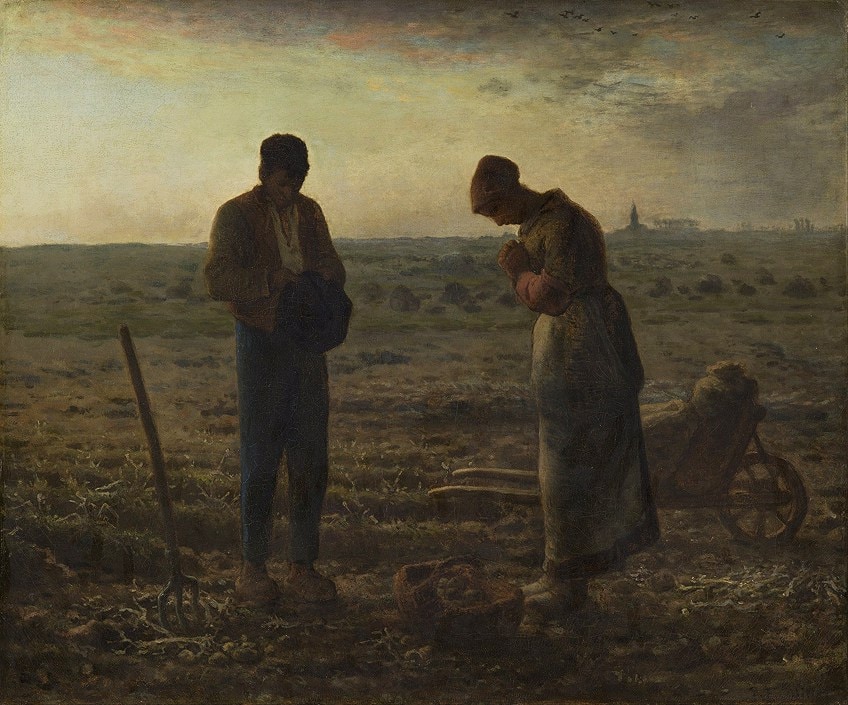
Another notable artist was Gustave Courbet, also a French artist from the Realism movement, who portrayed scenes of everyday people, especially peasants. Similarly, he gave a platform to those who have not been seen or heard in society, and Tanner’s paintings followed in similar footsteps.
Art was not just art, it was a platform for those who were seemingly shoved aside by the rules and rigor that underlined traditional artworks, like religious paintings, and how they should be.
“Monsieur Tanner, L’artiste Américaine”
The Banjo Player painting was exhibited at the distinguished Paris Salon in 1894. His other painting, The Thankful Poor (1894) was created in the same spirit of portraying African Americans with respect. Tanner’s artistic oeuvre has been described by various sources as moving in a different direction after he created the above-mentioned paintings, one in which he started painting religious scenes.
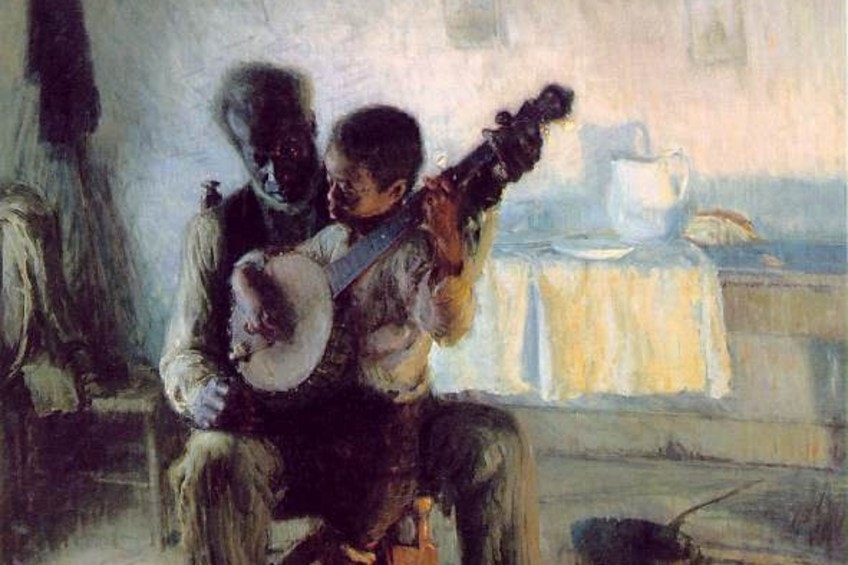
In The Banjo Lesson painting, Henry Ossawa Tanner set a scene with sensitivity to his subject matter. Combined with his utilization of color and the depiction of light, he redefined the place and role of African Americans in American society, but also his role within the world of art.
Tanner became a revered African American artist, one of the best in fact, and his work showcased his artistic abilities that went beyond racial divides. He lived in Paris but understood and shared the roots that lay deep in the hearts and memories of those in the United States, who ultimately fought a fight for freedom – a freedom we see in each stroke of Tanner’s paintbrush.
Frequently Asked Questions
Who Painted The Banjo Lesson Painting?
The Banjo Lesson (1893) was painted by the African American artist Henry Ossawa Tanner.
Where Is The Banjo Lesson Painting Now?
The Banjo Lesson (1893) by Henry Ossawa Tanner is housed at the Hampton University Museum, which is in the state of Virginia in the United States. Robert Curtis Ogden donated the painting in 1894 to the Hampton Institute, otherwise known as Hampton University.
What Does The Banjo Lesson Painting Mean?
The Banjo Lesson (1893) painting by Henry Ossawa Tanner holds significant meaning regarding the way African Americans were portrayed during the 19th century. In this painting Tanner depicts the subject with more poignancy and respect compared to the more stereotypical depictions of African Americans as entertainers, mostly playing the Banjo instrument, and ultimately in the position of slaves.
Isabella studied at the University of Cape Town in South Africa and graduated with a Bachelor of Arts majoring in English Literature & Language and Psychology. Throughout her undergraduate years, she took Art History as an additional subject and absolutely loved it. Building on from her art history knowledge that began in high school, art has always been a particular area of fascination for her. From learning about artworks previously unknown to her, or sharpening her existing understanding of specific works, the ability to continue learning within this interesting sphere excites her greatly.
Her focal points of interest in art history encompass profiling specific artists and art movements, as it is these areas where she is able to really dig deep into the rich narrative of the art world. Additionally, she particularly enjoys exploring the different artistic styles of the 20th century, as well as the important impact that female artists have had on the development of art history.
Learn more about Isabella Meyer and the Art in Context Team.
Cite this Article
Isabella, Meyer, “The Banjo Lesson Painting Henry Ossawa Tanner – A Detailed Analysis.” Art in Context. December 10, 2021. URL: https://artincontext.org/the-banjo-lesson-painting-henry-ossawa-tanner/
Meyer, I. (2021, 10 December). The Banjo Lesson Painting Henry Ossawa Tanner – A Detailed Analysis. Art in Context. https://artincontext.org/the-banjo-lesson-painting-henry-ossawa-tanner/
Meyer, Isabella. “The Banjo Lesson Painting Henry Ossawa Tanner – A Detailed Analysis.” Art in Context, December 10, 2021. https://artincontext.org/the-banjo-lesson-painting-henry-ossawa-tanner/.



